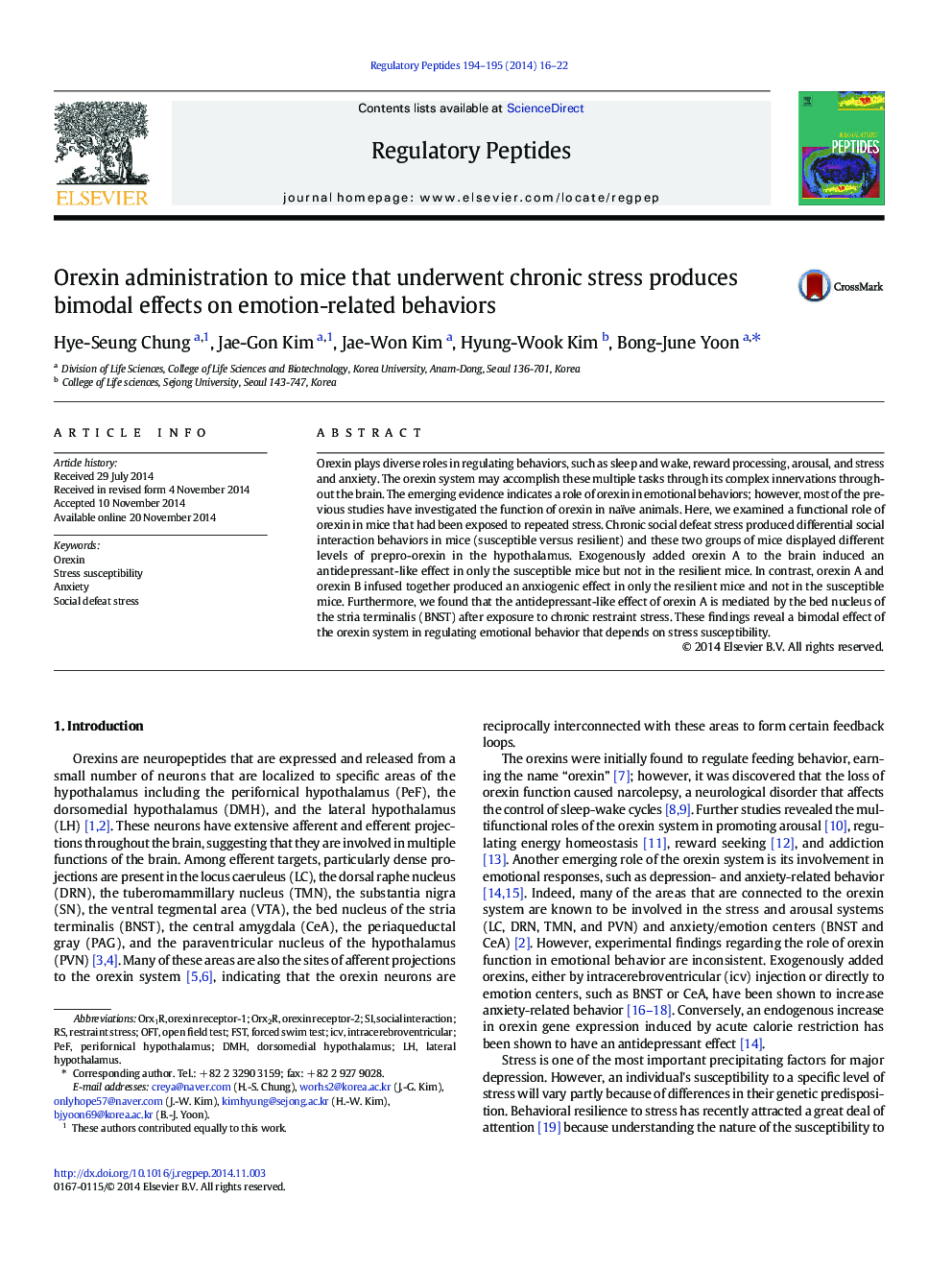| Article ID | Journal | Published Year | Pages | File Type |
|---|---|---|---|---|
| 2022368 | Regulatory Peptides | 2014 | 7 Pages |
•Social defeat stress produces varied social interaction behavior in mice.•Orexin A infusion increases the social interaction in stress-susceptible mice.•Orexin A/B co-infusion decreases the social interaction in stress-resilient mice.•Orexin A in the BNST induces antidepressant effects after chronic restraint stress.•Orexin has bimodal effects in regulating behavior depending on emotional states.
Orexin plays diverse roles in regulating behaviors, such as sleep and wake, reward processing, arousal, and stress and anxiety. The orexin system may accomplish these multiple tasks through its complex innervations throughout the brain. The emerging evidence indicates a role of orexin in emotional behaviors; however, most of the previous studies have investigated the function of orexin in naïve animals. Here, we examined a functional role of orexin in mice that had been exposed to repeated stress. Chronic social defeat stress produced differential social interaction behaviors in mice (susceptible versus resilient) and these two groups of mice displayed different levels of prepro-orexin in the hypothalamus. Exogenously added orexin A to the brain induced an antidepressant-like effect in only the susceptible mice but not in the resilient mice. In contrast, orexin A and orexin B infused together produced an anxiogenic effect in only the resilient mice and not in the susceptible mice. Furthermore, we found that the antidepressant-like effect of orexin A is mediated by the bed nucleus of the stria terminalis (BNST) after exposure to chronic restraint stress. These findings reveal a bimodal effect of the orexin system in regulating emotional behavior that depends on stress susceptibility.
